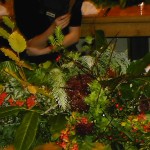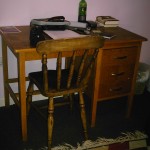 The viva voce for my MA in Creative Writing was on Monday. I have passed ( thanks to superb tuition from Greg Mosse) – and I am immediately wondering which subset in the Venn diagram of authors I should inhabit.
The viva voce for my MA in Creative Writing was on Monday. I have passed ( thanks to superb tuition from Greg Mosse) – and I am immediately wondering which subset in the Venn diagram of authors I should inhabit.
I’ve been asked to consider writing for adults. Straight off I flinch at that. I will admit to an entire Harry Ramsden’s on my shoulder about the status of children’s writers. It is compounded of my experience as a teacher that your rank is in direct proportion to the age of the children taught; the same impulse that made the ‘Children’s Writing IS a proper job’ badge sell out so quickly in November 2010, and Martin Amis’s remarks in February about brain injury and writing for children. The subtext is that writing for adults is somehow better, cleverer, more valuable.
Well, I’m with John Dougherty:
Don’t worry Martin. We can’t all be imaginative and versatile.
One of the things I admire most about the literature published for young people is the sheer range and breadth of ideas. Big ideas, written for people who will not be blinded by the effulgent beauty of your prose nor give one microfortnight of attention to reviews by your literary chums.
It is notable that David Almond (a literary hero to me) found a sense of liberation in writing for the young. I am put in mind of this concept:
Australian Aborigines say that the big stories—the stories worth telling and retelling, the ones in which you may find the meaning of your life—are forever stalking the right teller, sniffing and tracking like predators hunting their prey in the bush.
Robert Moss, Dreamgates
Quite simply, I believe young people are more likely to be receptive to the stories following me about and asking to be told than adults. And I bother to write because of my belief in those same young people, and what stories are for.
Every word written, every sentence, every story, no matter how dark the story itself might seem, is an act of optimism and hope, a stay against the forces of destruction.
David Almond, Hans Christian Anderson Award acceptance speech
Now before I get all too Messianic, I’d also like to point out that despite all the moaning of the pessimists, the children’s book market is thriving. According the ‘The Bookseller’ in 2001 it was worth £193 million – and in 2010 £325 million. Christopher Paolini’s ‘Inheritance’ sold more than 76,000 copies in UK in first week of publication this November.
Hilary Mantel’s ‘Wolf Hall’ (Man Booker winner) ? 14,600.
Children’s books often demonstrate the effectiveness of long tail marketing: they carry on being bought long after the brass bands and banners have left town.
It’s possible for me and my colleagues to do well.
When I decided to get serious about writing, I read Alison Baverstock’s unsettling but finally very useful ‘Is there a Book in You?’. She made it quite clear how important a support system is for any writer. My best scaffolding comes from SCBWI – I know I can contact wonderful people who will talk me down off the parapet, sort out my formatting issues or just plain be there. The conference in Winchester is a highlight of my year.
What other sort of writer could I possibly want to be?
Then come the next questions: YA or middle grade? Fantasy or thriller? Ghost stories or sea stories?
to be continued….
 Today, I went overseas – well, the Isle of Wight, actually. I have an arrangement with my husband when visiting clients in interesting places that I go too. I treat these jollies as kinds of ‘Artist’s Date’ to use Julia Cameron‘s term.
Today, I went overseas – well, the Isle of Wight, actually. I have an arrangement with my husband when visiting clients in interesting places that I go too. I treat these jollies as kinds of ‘Artist’s Date’ to use Julia Cameron‘s term.





